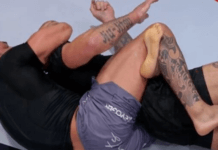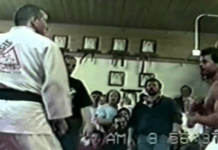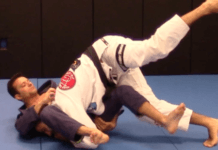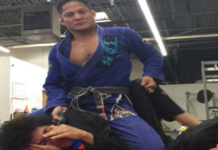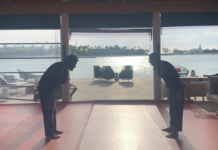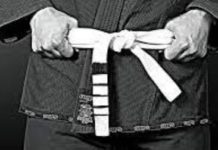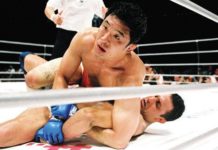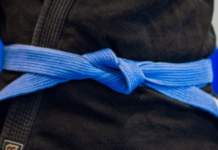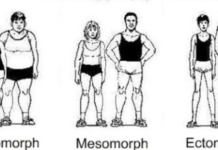BJJ is full of awesome moves and techniques. However, it can be said that not all are for everyone. It is because some of them are considered “too dangerous” and are not allowed at some belt levels or age groups. Some are even banned from competition at all and you cannot use them at e.g. championships organized by IBJJF. So the question is should you train such things if you can’t use them during the competition? Below you will find the answer to this question and a list of illegal BJJ techniques according to IBJJF rules.
Illegal BJJ techniques
International Brazilian Jiu-Jitsu Federation (IBJJF) is the largest BJJ organization in the world. No wonder that they call the shots when it comes to rules and establishing which techniques are not allowed at what belt level. Although other federations have slightly different rules and sometimes they can allow a little more, it’s just better to know the IBJJF rules anyway. Many tournaments are organized according to their rules etc. So that you don’t ever get accidentally disqualified, better look at the exact IBJJF rules below.
Completly prohibited techniques and moves
- Slam – dropping your opponent from a height after you picked them up when it is not the natural flow of the moves
- Spinal lock without choke
- Heel hook – controlling the knee/hip joint(s) and the heel bone, after which force is applied transversely, twisting the heel either medially or laterally.
- Locks twisting the knees
- Knee Reaping – one of the athletes places his thigh behind the leg of his opponent and passes his calf on top of the opponent’s body above the knee, placing his foot beyond the vertical midline of the opponent’s body and applying pressure on his opponent’s knee from the outside, true inside, while keeping the foot of the leg at risk stuck between his hip and armpit. One of the athletes doesn’t need to hold the foot of his opponent for the foot to be considered caught or stuck. For purposes of this rule, when one athlete is standing and bearing their weight on the foot of the same leg as the knee in danger, the foot will be considered caught or stuck.
- Scissor Takedown – attacking the opponent’s legs with your legs by using the scissoring motion of your legs to take away the opponent’s base and get them to the ground quickly
- In straight foot lock, turning in the direction of the foot, not under attack
- During toe hold, implementing outward pressure on the foot
- Bending fingers backward
- Grab the opponents belt and throws him to the floor on his head when defending a single leg situation while his opponent’s head is one the outside of his body
- Suplex takedown with landing with the opponent’s head or neck on the ground
Techniques becoming legal with age and/or belt
* 4 to 12 years old – all submission techniques are illegal
- 13 to 15 years old – submissions techniques stretching legs apart such as the banana split, which is a groin stretch submission where the attacking grappler stretches the defending grappler’s legs apart using both their arms and legs.
- 16 to 17 years old and Adult to Senior 5 white belt
- Choke with spinal lock
- Straight foot lock
- Ezekiel choke – forearm choke using the sleeve
- Frontal guillotine choke
- Omoplata
- Triangle (pulling head)
- Arm triangle
- Adult to Master 6 blue and purple belts
- Lock inside a closed guard pressing a kidneys or ribs
- Wrist lock
- Single leg takedowns while the attacking athlete has his head outside the opponent’s body
- Adult to Master 6 brown and black belts
- Bicep slicer – a technique where you take a bony part of your limbs, usually the shinbone or the forearm bone and you wedge it as deep as you can in the elbow crease of your opponent
- Calf slicer – a move that involves compressing the opponent’s calf muscle into one of the bones in your shin. As the name suggests, it is very similar to the biceps slicer, only done at the level of the knee
- Knee Bar
- Toe hold – it is a footlock submission where the attacker holds the ankle of his opponent close to his chest, using a ‘kimura’ type grip to control the end of the foot, usually touching his little finger (pinky) to the opponent’s toe
If the pictures appeal to you more or you are not sure if you understood everything correctly, you can also always check the IBJJF rulebook. It can be found here.
Why some techniques are banned?
Banning some techniques is nobody’s whim or random choice. They are illegal because they are actually more dangerous than other moves. This does not necessarily mean that they are very dangerous in themselves. Someone with appropriate skills and experience in using such techniques can use them completely safe. It’s just that in these illegal BJJ techniques the chance that something goes wrong is higher than with other moves. Or/and that their incorrect use of them can have far worse consequences, such as very serious injuries. After many documented cases when something went wrong while someone used such a technique, it was simply decided to ban them.
So, should you train illegal BJJ techniques?
The answer is yes, you should train illegal BJJ techniques and there are several reasons for this. Learning such techniques at the beginning of your BJJ path will make them less dangerous to you. Thanks to the knowledge of what they are about you will know when to tap when someone will want to apply it on you. Moreover, getting used to these techniques earlier than allowed, will give you an advantage in using them once it is legal for you. You will simply have the experience, unlike people who have just started learning this technique after they get a belt assigned to it.
It can also be described in other words. If thanks to learning these techniques, even if they are illegal according to some rules, you are improving your BJJ game, there is nothing to think about. Just train them. The fact that you won’t use it in competitions does not matter if thanks to the knowledge of it you feel that your jiu jitsu is more complete.
Additionally, just because some organizations prohibit something does not mean that all grappling federations also forbid it. For example, IBJJF prohibits slamming at all levels, while ADCC only for Beginners and Intermediate. It just means that it’s better to have more techniques and know when not to use them than not to know them and not be able to use them when is possible.
Just remember, don’t make illegal BJJ techniques base of your jiu jitsu game. They are great as a supplement but not the basis. If you only focus on such techniques when you can’t use them, you’ll be a bit vulnerable.
In conclusion
To sum up, you can and even should train illegal BJJ techniques. They can be really developing for your jiu jitsu game. However, you just must approach it wisely and not forget to be attentive during practicing them. Remember, don’t underestimate these techniques just because you can train them. They are forbidden for a reason, they can actually be a little more dangerous than others. Train them, remembering that.


